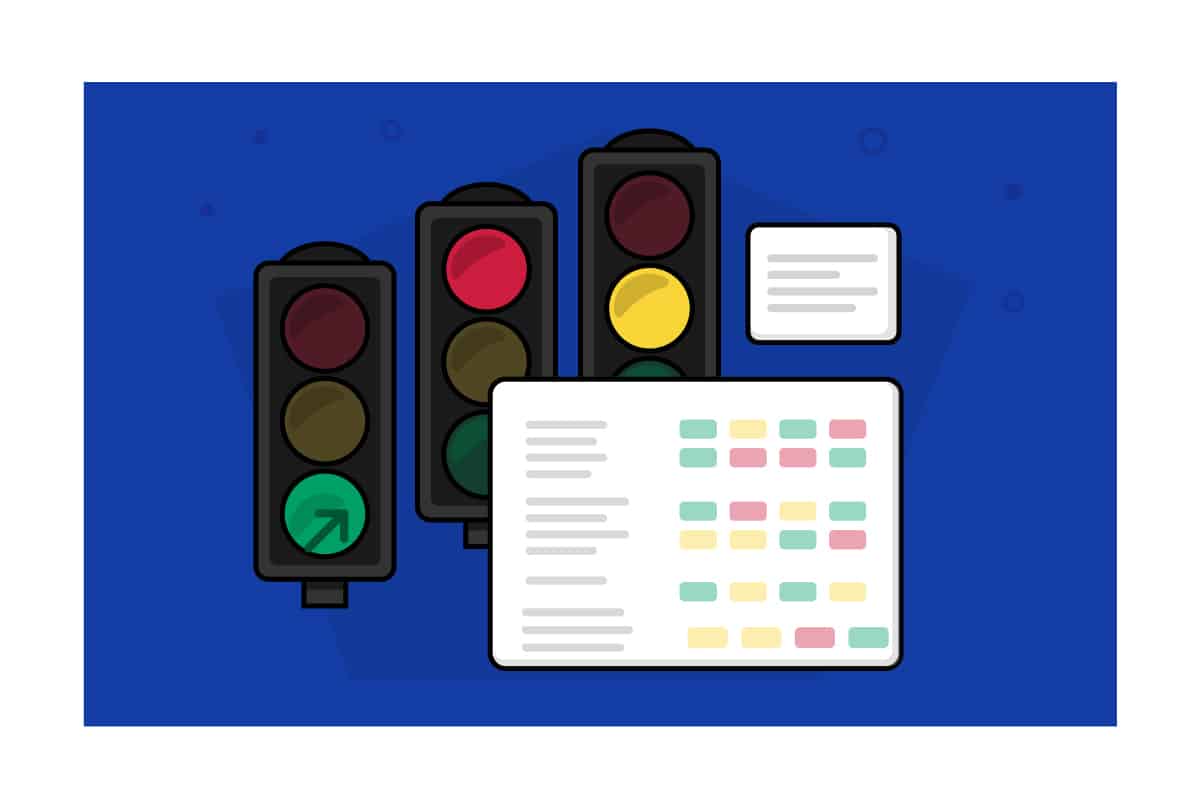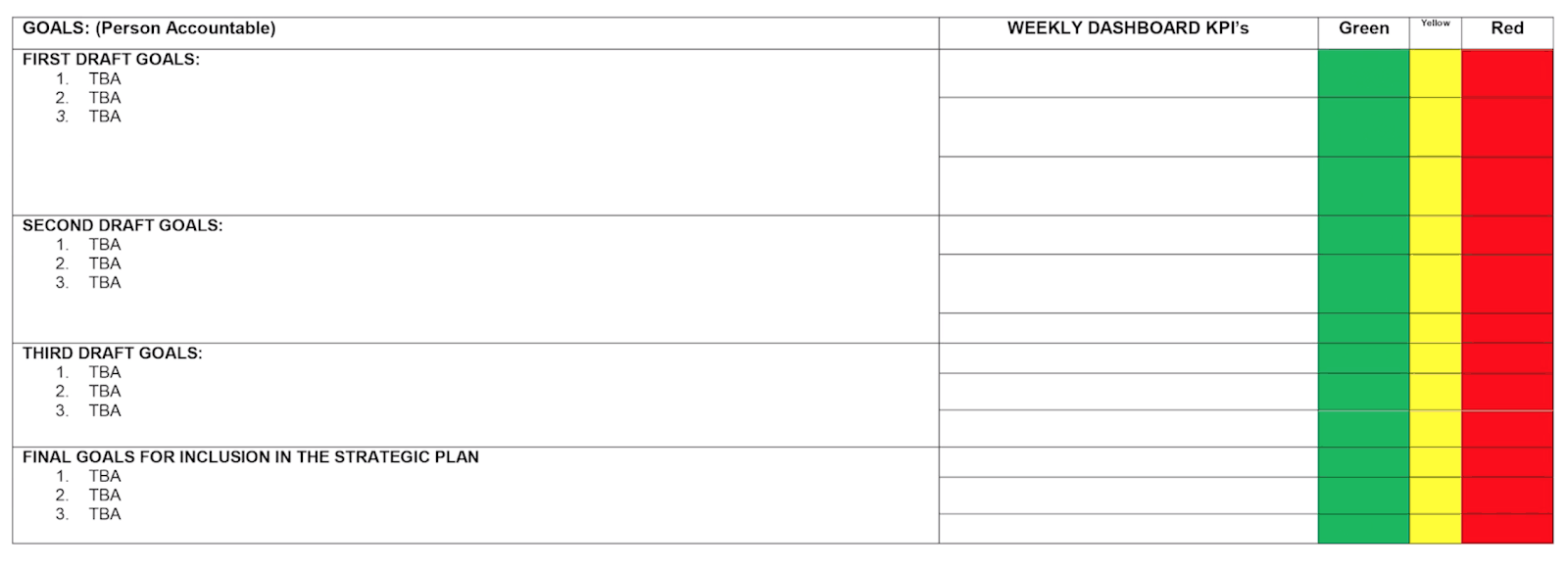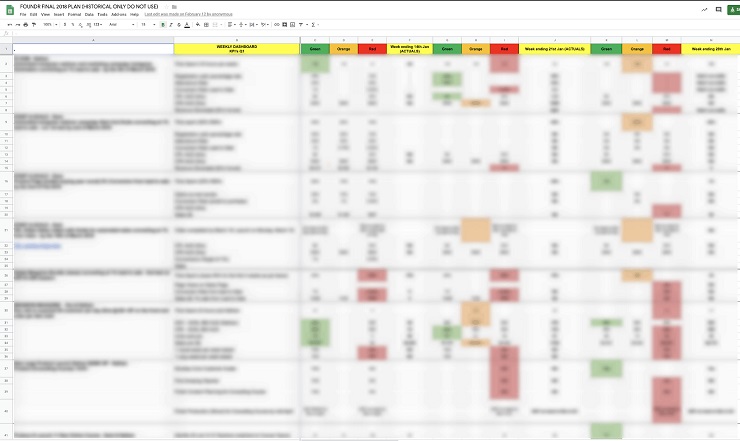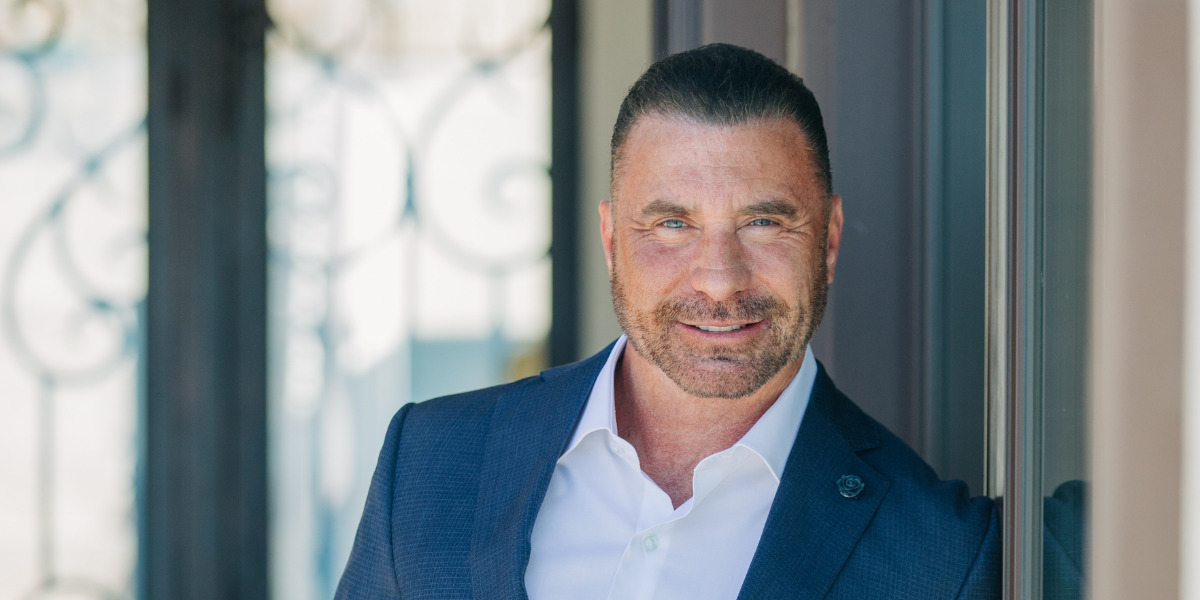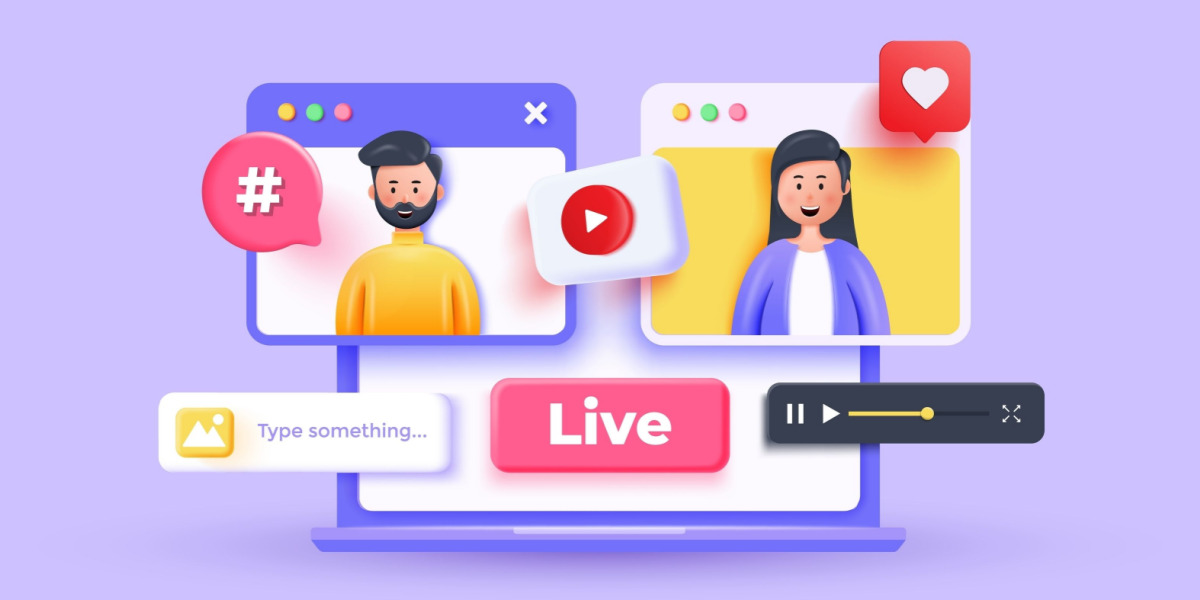Foundr has come a long way since we were a fledgling digital magazine, a side project of our founder Nathan. In the past year alone, we’ve launched seven courses, hired seven full-time employees, and seen a surge in revenue.
There are, of course, many factors involved when a business starts to take off like this—a dogged CEO, a dedicated team, and the right set of products and services. Then there are the factors that are less glamorous than all of that—like implementing the right systems.
I know, I know, snore. But it’s true. In fact, a while back, Foundr started applying one particular system that we know has had an outsized impact on the company’s ability to grow to where we are now. Not only that, it helped us define our true vision, and even brought us closer together as a team.
It’s called the “Traffic Light Reporting System.”
It’s been such a boon for us, that we decided to give the Foundr family a behind-the-scenes look at this exact process we implemented to help the business scale up—and outline how you can use it to grow your startup as well.
I’ll start by describing the system itself, and then explain how Foundr used it to achieve such great results. Green light, let’s go!
EXCLUSIVE FREE TRAINING: Successful Founders Teach You How to Start and Grow an Online Business
How to Organize Your Growth
Let’s start with a silly but important question: What are traffic lights for?
The simplest answer is that they organize traffic. The system indicates to both drivers and pedestrians how they need to behave in relation to one another. Green means go, yellow means slow down, red means stop.
It’s a very simple concept that we learn in grade school. Indeed, that simplicity is what makes the whole system work so well for everyone, and why it’s used in cities around the world. No matter where you’re from or what kind of experience you have, you can easily understand how to behave.
In a fast-growing company like Foundr, we always have multiple strategies moving at the same time. While Dave is working on new partnerships, Jenna is working on growing the blog, Ariel is working on finding influential people to participate in our podcast, and I’m creating new content and finding ways to get it in front of as many people as possible.
We have too many inputs managing multiple growth variables. You can see how we might get confused and overwhelmed. In the daily grind, it’s easy to forget the big picture and miss our real growth levers for shiny objects that don’t drive substantial results.
To keep us on the right path, we needed a system that, like traffic lights, organizes our efforts and helps us see how we’re doing in relationship to our goals. We found such a solution in the “traffic light reporting system.”
What’s the Traffic Light Reporting System?
Foundr has Steve McLeod, our official business coach, CEO of Courage For Profit, and the main instructor of our flagship course Triple Your Business, to thank for the Traffic Light Reporting System.
McLeod is a fan of using the analogy of traffic lights in his management consulting, and he’s introduced this particular system to more than 100 of his clients. And it works. It’s the system we’ve personally used to triple our business in just nine months (hence the name of the course).
In its most basic form, the Traffic Light Reporting System consists of taking all your main business key performance indicators (KPIs)—the metrics that measure the progress you make towards a goal—and checking their progress with the use of colors.
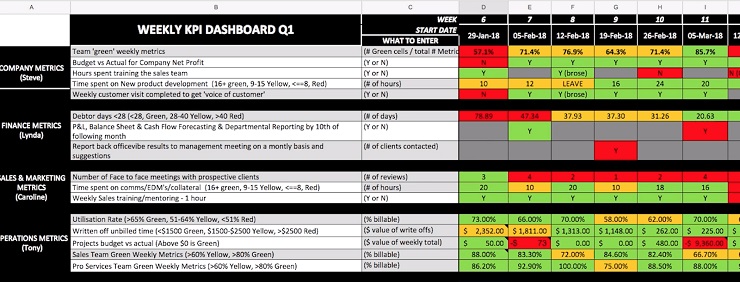
But that’s actually jumping ahead a little. First, let’s break down how you get to all of these KPIs in the first place, and how you know you’re working toward the right goals.
Knowing Your Vision
One of the best insights Steve shares in our Triple Your Business course is his “success formula,” which consists of having:
- A Vision
- Courage
- Discipline
- Thirst for Improvement
While the latter three are personality-related, the first one is the critical element that will drive all the results that come from your efforts.
Before you can set up your goals and KPIs (as you will see below), you need a compelling vision. The compelling vision is the North Star of your business—it’s what success looks like in five, 10, or however many years from now.
How you develop a compelling vision is a very personal process. While some entrepreneurs dream of becoming the next Steve Jobs and “making a dent” in the world, others merely want to grow enough so they can have more time to spend with their families.
Some will have very ambitious visions, while others will make do with less money, recognition, and overall success.
The point is that your vision—whether it’s small and humble or hairy and ambitious—will help you align your teams, map out the future of your company, and guide its growth.
In Foundr’s case, our vision is to build a household name entrepreneurial brand that impacts the lives of tens of millions of founders on a weekly basis.
That means we succeed if you succeed, whether that’s learning to launch your online business, grow your existing one, or sell it once it reaches a certain size.
We can only achieve such a vision if we develop the best content the entrepreneurial community has ever seen, including:
- Podcasts
- Magazine issues
- Videos
- Courses
- Guides
- Blog posts
With this vision in mind, we can develop our goals.
Goals
With the vision in place, your job is then to define your goals: What is it that you want to achieve in the next 12 months?
A goal can’t just be to “launch your business.” It has to be specific. As Steve explains, your goals must be SMART—that is, they need to be:
- Specific
- Measurable
- Actionable and accountable
- Realistic
- Time-bound
To make this scalable system work, define between three to five goals. Make sure to make them aligned with your vision so the former can get you closer to the latter.
What’s more, these goals should be first measured on a yearly basis, and then, they should be broken down on a quarterly and weekly basis.
For example, if your yearly goal was to grow to $100,000 in monthly revenue—whether that’s for your ecommerce store, your consulting agency, or your online business—in the following 12 months, you could break that down in the following manner:
- Quarter 1: Hit $25,000 in monthly revenue by the end of Q1
- Quarter 2: Hit $50,000 in monthly revenue by the end of Q2
- Quarter 1: Hit $75,000 in monthly revenue by the end of Q3
- Quarter 1: Hit $100,000 in monthly revenue by the end of Q4
Then, you’d break each quarterly goal down the same way for each month:
- Month 1: Hit $7,500
- Month 2: Hit $15,000
- Month 3: Hit $25,000
- And so on for each month from each quarter
In our case, our goals depend on the team to which they’re assigned. While the sales team has the goal of increasing our sales, the operations team has the goal of hiring a certain number of rockstars every quarter, and the funnel team has the goal of building a certain number of funnels a month.
We define our yearly goals at the start of every year in our yearly retreat.
EXCLUSIVE FREE TRAINING: Successful Founders Teach You How to Start and Grow an Online Business
How to Organize Your Growth
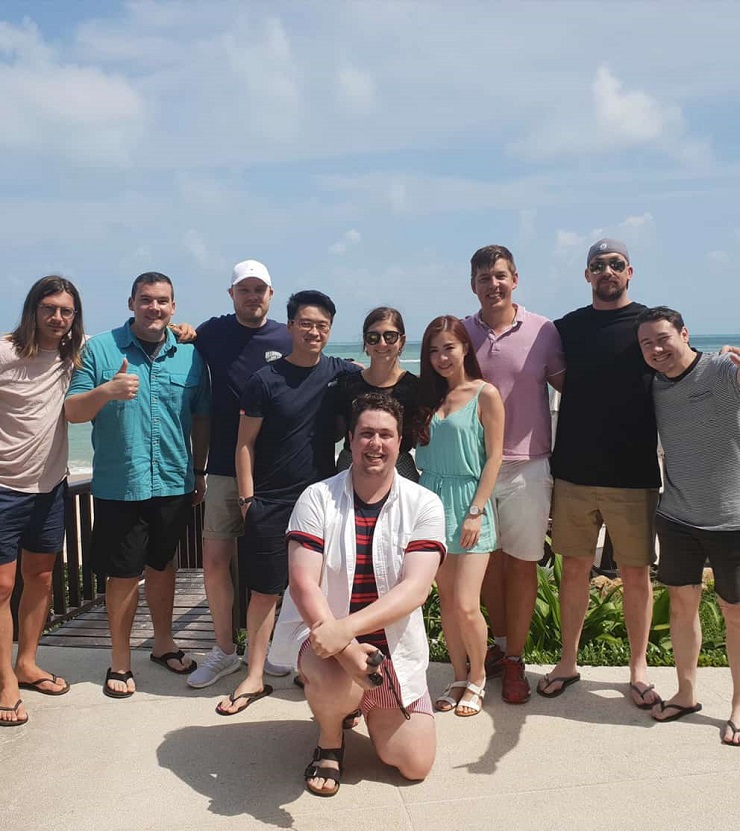
In this retreat, we take a deep look at the results from the previous year. It’s a tough meeting, because everyone has their own ideas, suggestions, and problems. What’s more, not everything we discuss can be done, so we need to be able to hear each other and collaborate, so we can decide on a direction that best represents our vision.
At the end of these meetings, everyone ends up with a clear goal they need to help achieve for their team for the following year.
After we decide on the most important yearly goals, we discuss the goals to hit in the following quarter, and then, we break each one down even further on a monthly, weekly, and daily basis.
For example, Dave and Jesse, two of our key marketing and funnel experts, leave knowing they need to create a certain number of funnels in the following year to sustain the launch of the new courses we launch. Zack, our video producer, ends up with a different set of goals related to his video editing responsibilities that he needs to fulfill throughout the year, and the same applies to everyone.
Everything we track will come from these goals. More importantly, every KPI we track in our traffic light reporting system, as you will soon see, is tied to these key goals.
KPIs
KPIs, or key performance indicators, are the metrics you use to measure the progress you make toward your goals. While a goal can be “grow our revenue by 300%,” the KPI that represents it would be “revenue growth.”
KPIs alone aren’t useful enough to track the progress made toward a goal. What matters is that you define a target that you aspire to hit. In the example above, a target would be to hit 50% revenue growth in one quarter. So the entire goal would look like this:
- Goal: Grow revenue by 300% in one year
- KPI: Revenue growth
- Target: Grow revenue 50% in Q1
The KPI will help you see if you’re getting closer to your ultimate goal or if you’re stuck in the process.
Just as you should have between three to five yearly, quarterly, weekly and daily goals, your KPIs and targets must follow the same structure. Each yearly target and KPI should be tied to each yearly goal, and each quarterly goal must have a similar quarterly KPI and target.
The Light Traffic Reporting Dashboard
After all this foundational work, we can finally create the traffic light reporting dashboard, where you can keep track of your quarterly, weekly, and daily KPIs. The simple idea is that you measure your KPIs using the three colors of a traffic light:
- When you hit a target for each KPI, you mark it green.
- When you almost hit one, you mark it in yellow.
- When you miss the target, you mark it in red.
Because we have multiple goals for each team, we have separate dashboards for each team.
Each dashboard has weekly and, in some cases, daily targets to hit for each KPI. While some of the KPIs are project-based—one could be specific for the launch of a new course—the majority are time-based.
Every Tuesday, we have an all-hands meeting where we track the progress we make in relation to each KPI and target, and we then assign the corresponding color to each result.
(Fun fact: The reason we have the meetings on Tuesday and not Monday is that some of our team members, like Zack who’s based in New York, have large time differences from our headquarters in Melbourne. Their Mondays are the Australia team’s Tuesdays, so we have our meetings on the latter date. Isn’t the world of remote working great? 😃)
When one team hits (or exceeds) their weekly target, we highlight it in green. When we get close to hitting it, we highlight it in yellow. When we get far off the target, we highlight it in red.
Just like on city streets, the key is simplicity. Whenever you want to check the progress toward your goals—the relentless discipline with which you attack each one—you open your KPI dashboard and check the colors.
When you see mostly green numbers, it means you’re progressing. When most of the results are yellow or red, it means you’re lagging behind your goals and you need to analyze potential solutions.
Simple, effective, and massively actionable.
Note: To get a deep understanding of how this whole system works, I highly recommend you sign up for the course Triple Your Business.
How Foundr Tripled Its Business with the Traffic Light Reporting System
A few years ago, Foundr was a promising startup with a lot of potential. We had already grown enough to have a functioning magazine, a few profitable courses, and an engaged audience.
The problem, as many startup founders can attest, is that we had too many possibilities. If there’s such a thing as a good problem, this may be it. The obstacle this creates is that it makes it hard to prioritize the opportunities that matter; it’s hard to pick between the ones that will have a massive positive impact in the future of the company and the ones that are just another shiny object.
For us, this meant that in one month we would launch an online course, while in the next we would have to launch a crowdfunding project, then a coffee table book, and then…well, you get the idea. We were everywhere, trying to catch too many golden eggs, which meant we weren’t anywhere at the same time. The whole situation, while motivating and exciting, ended up being chaotic and pretty stressful.
We were already working with some business coaches, but in most cases, they can only give suggestions. They can’t put their hands on the company to actually implement each suggestion. They were helpful, but not useful.
Then, we decided to bring in Steve. Little did we know that was going to be a decision that would change our path forever.
The first time we met him, Nathan, Dave, Zack (who had come all the way from New York shortly after being hired), and a few other members of the team, went to Torquay, a small but famous beach town an hour and a half from Melbourne.

The idea of the trip was to have a hands-on meeting with Steve so he could help us uncover our vision and goals. We thought that such a workshop would be a traditional 9-to-5 retreat that would eventually let us relax and enjoy the surroundings.
But we were wrong—by a long shot.
The workshop was incredibly intensive. The lack of a clear strategy meant we had to come up with something realistic and actionable right on that day, from scratch.
The whole event ended up going from 7:30 a.m. to past 9 p.m. It was so late that by the time the team got out, nothing was open for dinner. The team had to eat a lousy pizza, a meager reward for such an exhaustive day. 😅
Looking back, the workshop ended up being the breaking point that allowed us to zero in on Foundr’s grand strategy—the vision that would drive our growth for the next 5 to 10 years.
From then on, there was no more space for new shiny objects; we had to get the discipline to fulfill our vision. There was no other way.

Thanks to Steve’s guidance, last year Foundr tripled its business growth. Such outstanding results happened thanks to our relentless focus on the highest leverage growth tactics that would fuel our vision.
What’s more, Steve taught us something deeper. Before this event, everyone seemed to be on everyone else’s back. Steve showed us that to become a high-performance team, it’s important to trust each other. Nowadays, the entire team is in the same boat (or car), traveling to the same destination.
EXCLUSIVE FREE TRAINING: Successful Founders Teach You How to Start and Grow an Online Business
How to Organize Your Growth
Find Your Vision, Chart Your Growth
In the information-overloaded world we live in, it’s easy to get overwhelmed with all the potential possibilities out there. People forget that each tactic you pursue must lie within a strategy. And strategy is something that a lot of people never really define.
If you have a hard time figuring out what’s truly important to you and you’re always changing tactics before they have a chance to work, stop and define your larger plan.
Stick to your plan—like the one Steve helped us create—and you will get results.
The traffic light system then helps entrepreneurs overcome “shiny object syndrome” and focus on realistic and achievable goals, and their related milestones.
More importantly, the traffic light system can help you develop the discipline to execute your strategy week in and week out, making huge strides before you know it.
Now we want to hear from you: What’s your true vision? Got any questions on Foundr’s use of the traffic light system? Let us know in the comments below.
